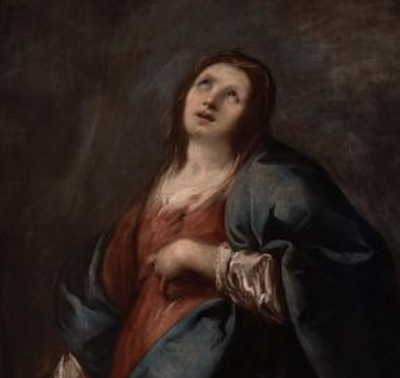Neapolitan school; early 18th century. No title. Oil on canvas. Renting.
Lot 74
About Seller
Setdart Auction House
Carrer Aragó 346
Barcelona
Spain
Setdart Subastas was born in 2004 and is currently the first online art auction in Spain with solidity, prestige and reliability guaranteed by our more than 60,000 users. Setdart has a young, dynamic and enterprising team ready to successfully manage the purchase and sale of art works through custom...Read more
Estimate:
EUR€4,000 - EUR€5,000
$4,255.32 - $5,319.15
Absentee vs Live bid
Two ways to bid:
- Leave a max absentee bid and the platform will bid on your behalf up to your maximum bid during the live auction.
- Bid live during the auction and your bids will be submitted real-time to the auctioneer.
Bid Increments
| Price | Bid Increment |
|---|---|
| EUR€0 | EUR€10 |
| EUR€200 | EUR€25 |
| EUR€500 | EUR€50 |
| EUR€1,000 | EUR€100 |
| EUR€3,000 | EUR€200 |
| EUR€5,000 | EUR€500 |
| EUR€10,000 | EUR€1,000 |
| EUR€20,000 | EUR€2,000 |
| EUR€50,000 | EUR€5,000 |
About Auction
By Setdart Auction House
May 31, 2021
Set Reminder
2021-05-31 08:30:00
2021-05-31 08:30:00
America/New_York
Bidsquare
Bidsquare : OLD MASTERS - Day 1
https://www.bidsquare.com/auctions/setdart-auction-house/old-masters---day-1-6998
Setdart Auction House sofia@setdart.com
Setdart Auction House sofia@setdart.com
- Lot Description
Neapolitan school; early 18th century. No title. Oil on canvas. Renting. Presents repaints. Measures: 94 x 69 cm. The portrait follows, in a certain way, models inherited from the baroque period, as can be seen in the representation of the large curtain located in the upper right zone. The narrative scene shows the figure of a religious man holding a crucifix in his hands and a bible in the other. The protagonist with a nimbus of sanctity, directs his gaze to the sky, which coincides with a ray of light that comes from the exterior landscape and crosses the room until it reaches the portrayed person. Despite his humble black clothing, we can discern that he is a high church official, since the mitre and the bishop's crozier can be seen on the floor. The portrait has an idealized landscape background, the usual type in the works of the Italian school, softening the baroque characteristics of the same. In the foreground, and with the help of a tree, the composition is closed by the architecture in which the main character is inscribed. The distinctive sign of the Neapolitan school has always been its strong naturalistic character, its warm color, with reddish and chestnut dominants and the cultivation, together with the altar painting, of a type of realistic painting its best exponent. In Naples the influence of José Ribera was equal or superior to that of Caravaggio. His naturalism, more sensual and material, more vigorous and vehement, less intellectual than that of the latter, becomes permeable over time to Venetian and Flemish influences, enriching color and lightening of technique, especially from 1635. His most faithful disciples are the Fracanzano family, Cesare (1600-51) and Francesco (1612-56), Bartolomeo Bassante (1614-56), Paolo Domenico Finoglia (1590-1645) and some others who later cultivated special genres such as Aniello Falcone (1607-56), Salvatore Rosa (1615-73) or Luca Giordano. However, from the Baroque period onwards, the colors were softened and nuanced without opting for tenebrism, but preserving a great theatricality in the representations.
- Shipping Info
-
In-house shipping available. Please inquire at admin@setdart.com.
-
- Buyer's Premium



 EUR
EUR CAD
CAD AUD
AUD GBP
GBP MXN
MXN HKD
HKD CNY
CNY MYR
MYR SEK
SEK SGD
SGD CHF
CHF THB
THB

















